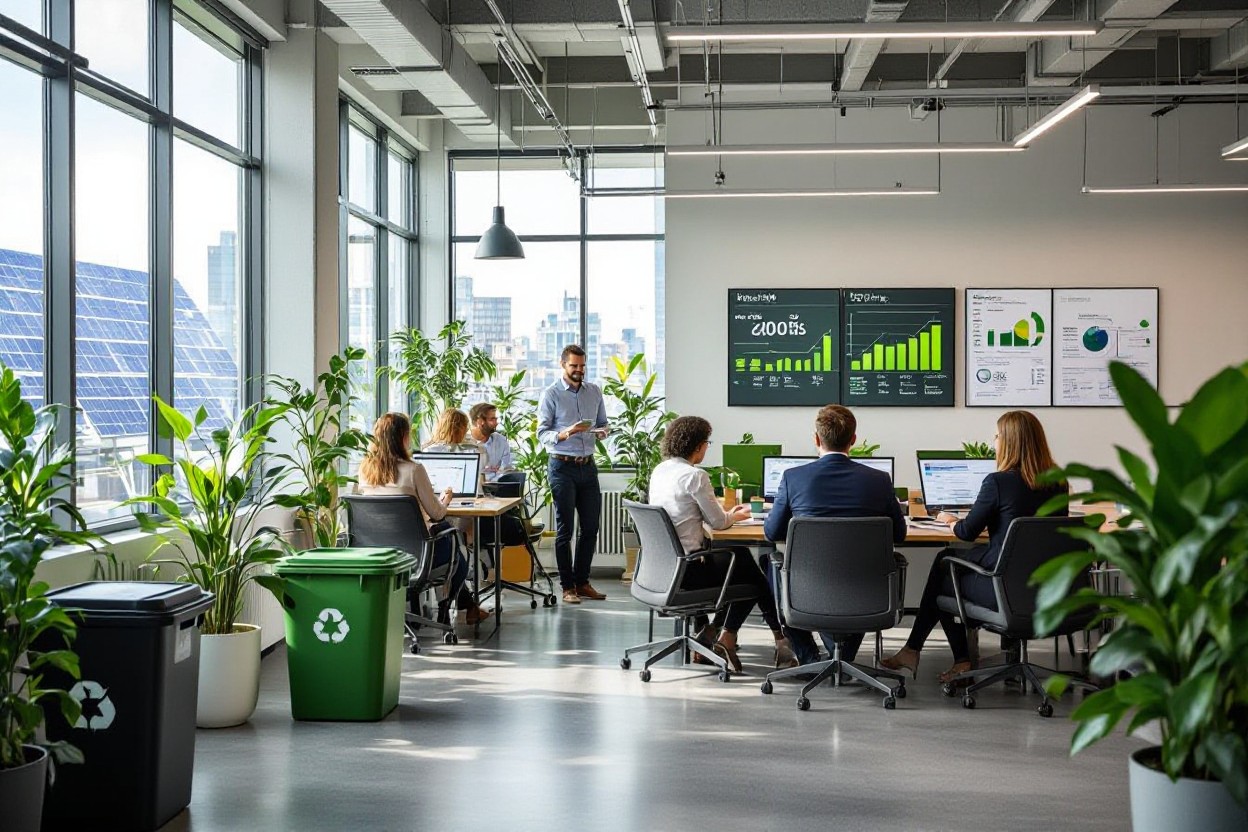Just as you may notice the growing emphasis on eco-friendly choices in daily life, sustainability’s rise to mainstream awareness spans several decades. From early conservation efforts to the impactful 1970s environmental legislation and the global climate activism of the 21st century, the journey reflects society’s evolving priorities. Understanding this timeline helps you grasp how environmental dangers like pollution and resource depletion have driven policy changes and individual action. By exploring key milestones, you gain insight into how your choices today contribute to a positive, sustainable future for the planet.
The Roots of Environmental Awareness: 1960s to 1970s
During the 1960s and 1970s, an awakening to environmental issues began to take shape, marked by increasing public concern over pollution, wildlife conservation, and the health of the planet. You witnessed dramatic Smog in cities like Los Angeles, water pollution in rivers such as the Cuyahoga catching fire, and alarming reports on pesticide impacts. This era set the stage for activism that merged scientific research with public advocacy, fostering a growing sense of responsibility toward your natural surroundings and setting environmentalism on a path toward mainstream recognition.
The Birth of the Modern Environmental Movement
Rachel Carson’s 1962 book “Silent Spring” is often seen as a catalyst for the modern environmental movement, exposing the dangers of pesticides like DDT to ecosystems and human health. You also saw grassroots organizations form, pushing for policies to curb pollution and protect wildlife. The growing media coverage and public protests made environmental issues visible and urgent, transforming concern into collective action.
Major Milestones: Earth Day and Silent Spring
Earth Day, first celebrated in 1970, became a powerful symbol of environmental awareness, mobilizing over 20 million Americans for cleaner air, water, and land. Alongside this, Rachel Carson’s “Silent Spring” had already ignited debates on chemical safety, influencing legislation like the 1972 ban on DDT. These milestones galvanized political will and public support, embedding sustainability issues into national policy discussions and your everyday consciousness.
Beyond their symbolic roles, Earth Day and “Silent Spring” concretely shaped environmental policy and grassroots activism. Earth Day’s widespread participation showed lawmakers the depth of public concern, accelerating environmental laws like the Clean Air Act and the establishment of the EPA. Meanwhile, “Silent Spring” provided a scientific foundation challenging industry practices and sparked enduring scrutiny of chemical impacts. Together, they not only increased awareness but provided a framework for sustained environmental advocacy that you can still trace in today’s sustainability efforts.
A Turning Point: The 1980s and 1990s
The 1980s and 1990s marked a significant shift as sustainability gained traction beyond conservation circles. You saw environmental issues move into global economic and political agendas, fueled by growing evidence of climate change and resource depletion. Industries started adopting cleaner technologies while consumers became more aware of their ecological footprint. This era witnessed an awakening where sustainability was no longer niche; it became embedded in policymaking, corporate strategies, and civil society movements, setting the stage for a globally coordinated approach to protect your planet’s future.
From Conservation to Sustainability: Expanding the Narrative
Efforts shifted from protecting isolated ecosystems to embracing a holistic view that integrated social, economic, and environmental dimensions. Ecosystem management evolved into sustainable development, recognizing the interdependence of natural resources and human well-being. You could see this reflected in urban planning, agriculture, and energy sectors, where strategies aimed to reduce waste, promote renewable resources, and foster equitable growth. This expanded narrative aligned environmental health with poverty reduction and economic stability, fundamentally reshaping how sustainability was perceived worldwide.
Key International Agreements: The Brundtland Report and Beyond
The 1987 Brundtland Report, officially titled “Our Common Future,” redefined sustainability as meeting present needs without compromising future generations. It laid the groundwork for the 1992 Earth Summit in Rio, which produced major agreements including the UN Framework Convention on Climate Change and Agenda 21. These efforts created frameworks you can still see guiding sustainability policies today, encouraging countries to cooperate globally on issues like deforestation, biodiversity loss, and greenhouse gas emissions.
The Brundtland Report’s influence extended far beyond its publication, shaping diplomatic and environmental discourse for decades. It introduced the concept of sustainable development into mainstream policy, urging governments and businesses to think long-term about resource consumption and environmental impact. The Earth Summit in Rio not only established key treaties but also mobilized NGOs, indigenous groups, and private sectors, transforming sustainability from abstract ideals into concrete, actionable goals. These agreements emphasized measurable targets and reporting mechanisms that hold signatories accountable, paving the way for future global climate negotiations like the Kyoto Protocol and Paris Agreement you recognize today.

The Rise of Corporate Responsibility: 2000s
By the early 2000s, businesses began integrating sustainability into their core strategies, responding to growing public demand and regulatory pressures. Companies like Patagonia and Interface led the way by adopting comprehensive environmental policies and setting measurable goals for carbon neutrality and waste reduction. This era marked a shift from mere compliance to proactive responsibility, showcasing how corporations could balance profit with planetary care. Investors also started scrutinizing environmental, social, and governance (ESG) factors, influencing corporate behavior and emphasizing transparency and ethical practices worldwide.
Sustainability Goes Mainstream: Corporate Initiatives and Certifications
Corporate commitments to sustainability became widespread with initiatives such as the UN Global Compact and certifications like ISO 14001 and LEED gaining popularity. These standards provided frameworks for measuring environmental impact and improving resource efficiency. Large retailers like Walmart launched sustainability index programs, pressuring suppliers to improve eco-performance. You will notice that over time, these initiatives turned from niche efforts into business imperatives, helping companies build credibility while reducing risks associated with environmental degradation.
The Role of Technology: Innovations Driving Sustainable Practices
Technology played a pivotal role in enabling sustainable corporate practices by enhancing energy efficiency, optimizing supply chains, and reducing waste. Companies invested in renewable energy sources, smart grid technology, and data analytics to monitor environmental footprints more accurately. You could see sectors like manufacturing and agriculture leverage IoT sensors and AI to minimize resource usage and enhance sustainability outcomes, directly influencing decision-making with real-time insights and predictive analytics.
Expanding on the technological innovations, consider how AI-driven energy management systems have transformed facility operations by automatically adjusting heating, cooling, and lighting based on occupancy and weather conditions, reducing energy consumption by up to 30%. Similarly, blockchain technology has improved supply chain transparency, enabling companies to verify sustainable sourcing and labor practices. Drones and remote sensing have revolutionized environmental monitoring, allowing for precise tracking of deforestation or pollution. These advances not only reduce environmental impact but also empower you to hold businesses accountable and participate in a more transparent, sustainable economy.

The Shift in Public Perception: 2010s to Present
As the 2010s unfolded, sustainability moved from niche concern to a dominant social conversation, fueled by increasingly visible climate crises and data on environmental degradation. Mainstream media coverage exploded, with documentaries like Before the Flood and influential reports such as those by the IPCC increasing public awareness. You witnessed companies racing to showcase eco-friendly initiatives while consumers demanded transparency, favoring brands aligned with green values. This era marked the transformation of sustainability into a lifestyle choice and market expectation, reflecting a profound change in how society values environmental stewardship.
Grassroots Movements and Social Media Empowerment
Social media platforms exponentially boosted grassroots environmental campaigns, allowing you to connect instantly with activists worldwide. Movements like Extinction Rebellion and the global climate strikes gained momentum through viral hashtags and real-time organizing. By harnessing digital tools, individuals and local groups amplified their voices beyond traditional boundaries, fostering global solidarity and pressuring policymakers. This digital empowerment means your participation in environmental activism can achieve impact without needing institutional backing.
Youth Activism: How Young Leaders are Reshaping Sustainability
Young environmentalists like Greta Thunberg have galvanized millions, transforming youth activism into a potent force reshaping global climate discourse. Their advocacy cuts through political inertia by demanding immediate action, influencing international summits and national policies. This generation embraces innovative approaches, from school strikes to social media campaigns, making sustainability a generational priority. Your exposure to these young leaders highlights how activism is now driven by empathy, urgency, and a bold reimagining of the future.
Building on these dynamics, youth activists organize with a technology-savvy edge, utilizing platforms like TikTok and Instagram to educate peers and mobilize grassroots efforts rapidly. Groups such as Fridays for Future demonstrate how coordinated student strikes in over 150 countries can pressure governments to commit to more aggressive climate targets. By emphasizing intersectionality, they highlight how social justice intertwines with environmental health, broadening the movement’s appeal. This wave of youth leadership offers you concrete examples of how passionate, informed advocacy can drive systemic change on a global scale.

Looking Forward: The Future of Sustainability
Growth in sustainability hinges on innovations and collaborative efforts shaping a more circular and resilient world. You will notice increasing integration of eco-friendly technologies and revamped consumption models aimed at minimizing waste and maximizing efficiency. Sustainable practices are no longer isolated but embedded across industries, policy frameworks, and consumer behaviors. As this momentum builds, your participation as a consumer and advocate will influence how quickly these transformative trends reach mainstream adoption.
Emerging Trends: Circular Economy and Green Innovation
Exploring beyond traditional sustainability, the circular economy fosters systems that repurpose materials endlessly, radically reducing waste. Businesses like Patagonia and IKEA exemplify this by designing products for reuse and recycling, saving significant resources. Simultaneously, green innovation advances, from biodegradable packaging to carbon capture tech, disrupting legacy industries. You can engage with these trends by supporting companies prioritizing circular models and encouraging innovation that balances profitability with planetary health.
Policy and Global Collaboration: What Lies Ahead
International agreements and national policies are advancing toward setting ambitious carbon neutrality goals, with over 130 countries committing to net-zero emissions by 2050. These frameworks increasingly incentivize sustainable investments and penalize pollution, driving systemic change. You’ll find more stringent regulations on energy use, deforestation, and pollution impacting corporate and personal choices alike, as governments and global coalitions strive for collective climate action.
The progression of sustainability policies signals an era of heightened cooperation between nations, businesses, and communities. For example, the Glasgow Climate Pact highlights commitments to phase out coal and scale up financing for climate resilience, impacting markets worldwide. You’ll observe that compliance is becoming a critical aspect of corporate strategy, while consumers gain greater access to transparent reporting on environmental impact. This evolving policy landscape pushes you to stay informed and active in shaping sustainable futures through civic engagement and ethical consumption.
Final Words
Summing up, sustainability became mainstream as a result of decades-long environmental advocacy and growing public awareness that you have helped shape through your choices and actions. From early conservation efforts to landmark events and policy changes, society gradually recognized the importance of preserving natural resources for future generations. By staying informed and actively supporting sustainable practices, you continue to play a vital role in advancing this ongoing movement and ensuring a healthier planet for all.




Leave a comment